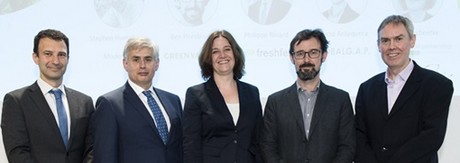Do secondary standards make our food safer?
In a panel discussion hosted in Monheim, Germany on November 29, five food chain experts concluded that food safety is only one aspect of a complex series of required private standards. The panelists were Ignacio Antequera of GLOBALG.A.P., Philippe Binard of Freshfel Europe, Ben Horsbrugh of Greenyard Fresh, and Birte Tschentke of Food Chain Relations at Bayer.
When discussing secondary standards, one must also talk about the influence these standards have on sustainable agriculture and how the food value chain can identify solutions of benefit to everyone, from farmers to end consumers. Threats come from food safety crises and the response is secondary standards. There are three kinds of standards in the fresh produce sector in Europe: primary standards, (e.g. those set by the European Commission), voluntary standards from certification systems, and secondary standards. Secondary standards are imposed by retailers and developed individually and usually exceed primary standards. They regulate the number of allowed residues, MRLs, and use of certain plant protection products.
Philippe Binard believes that the system is overcontrolled and that Europe has the strictest legislation in the world governing food safety. Ben Horsbrugh argues that this is due to pressure from NGOs pushing firms to protect their brands by introducing ever tougher requirements. However, the panellists were unclear as to whether all of this regulation was actually necessary and they felt that the real issue is how best to support farmers with the tools to control weeds, pests, and diseases so they can protect their crops.



